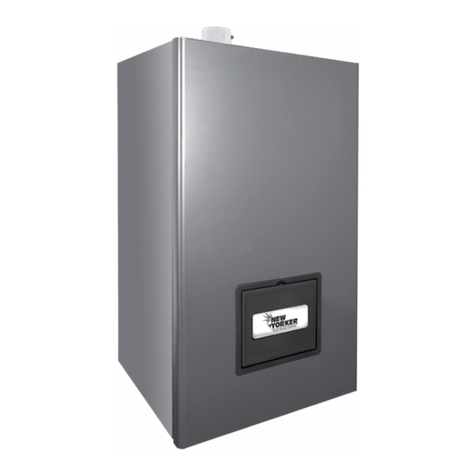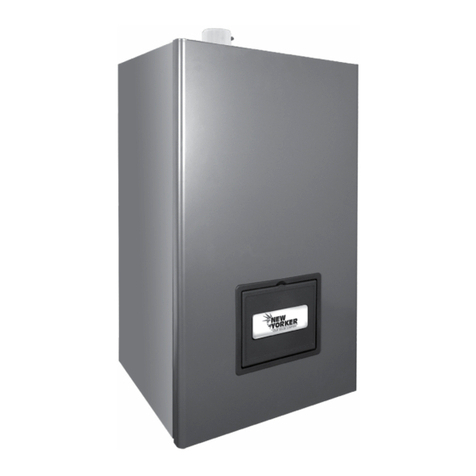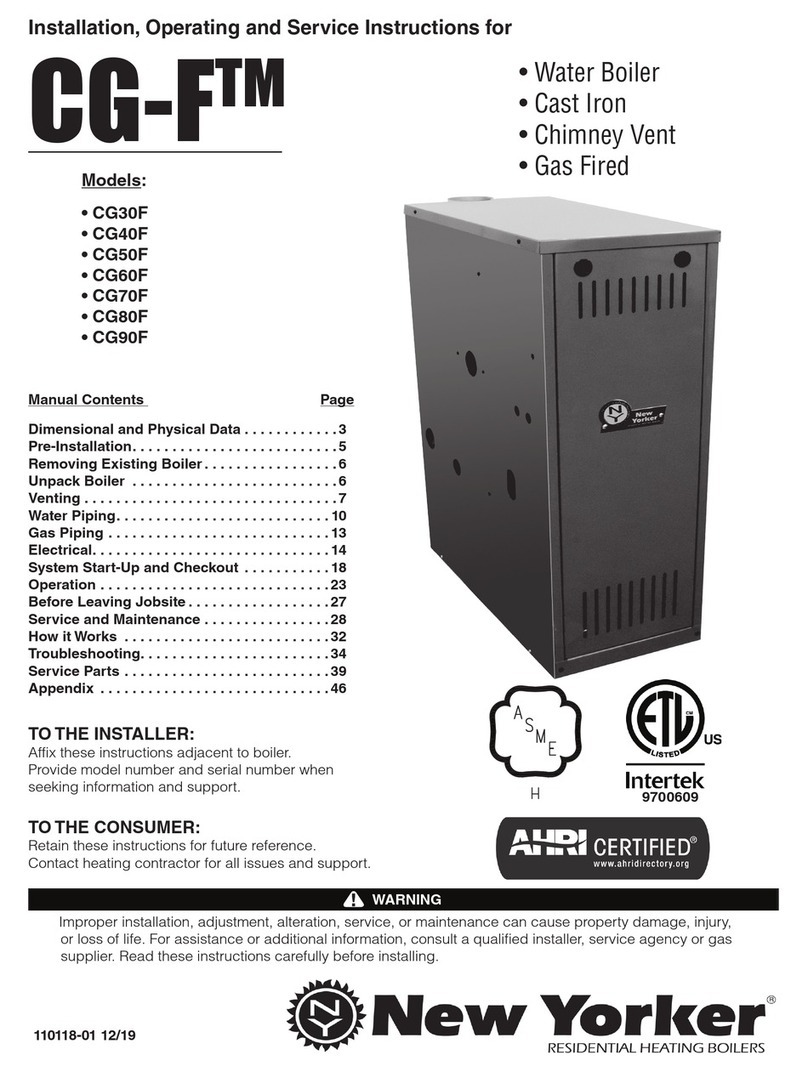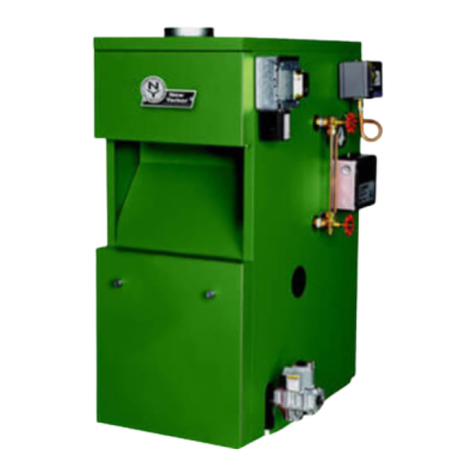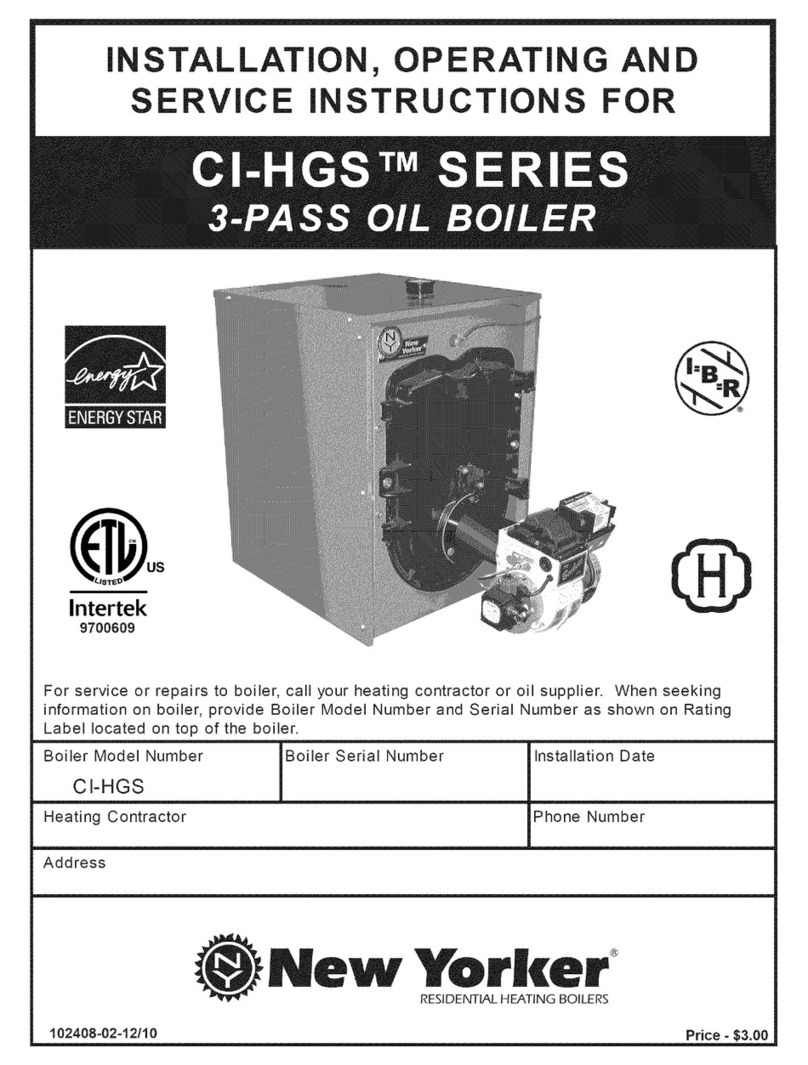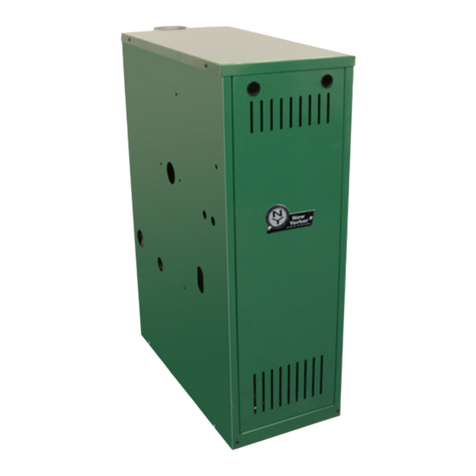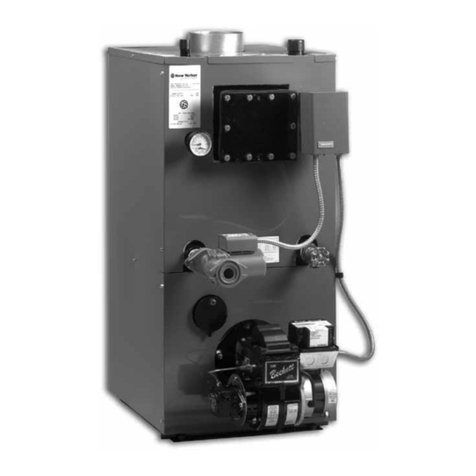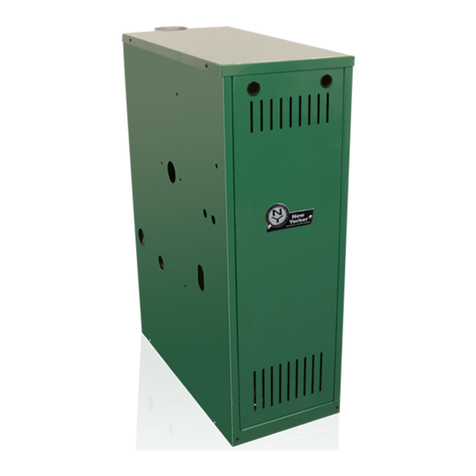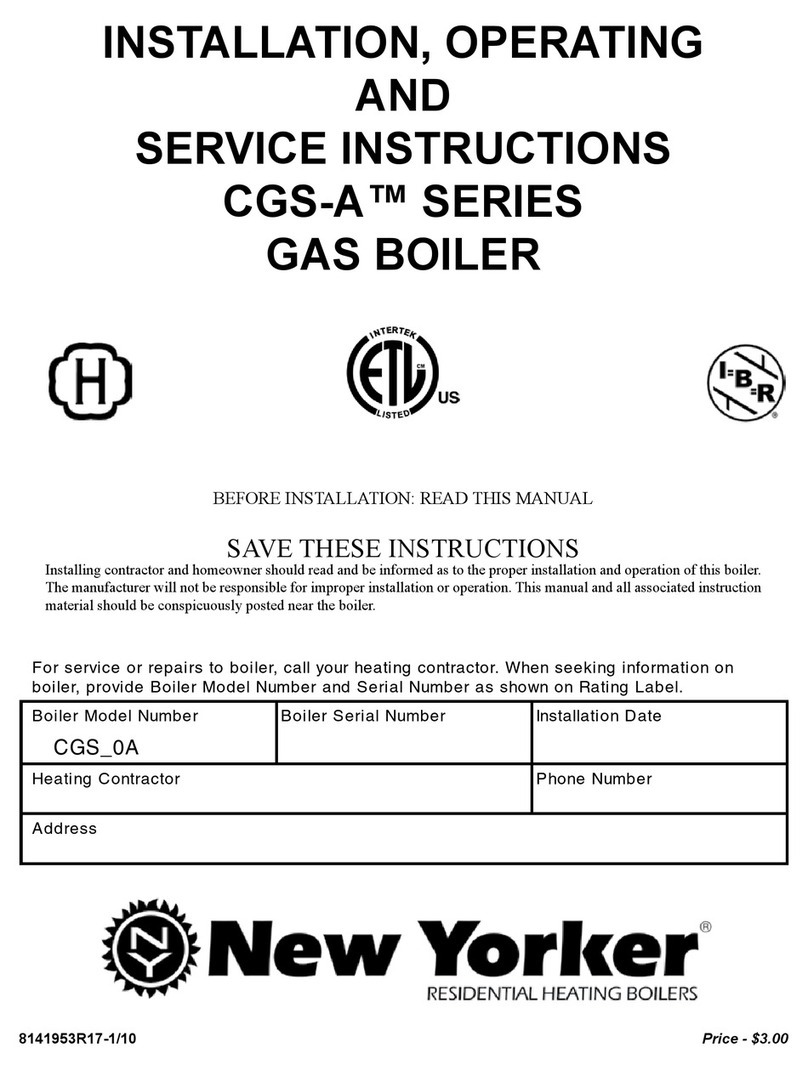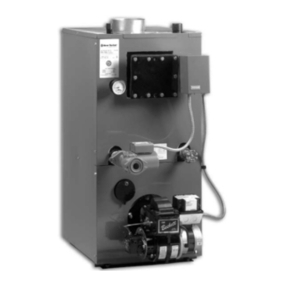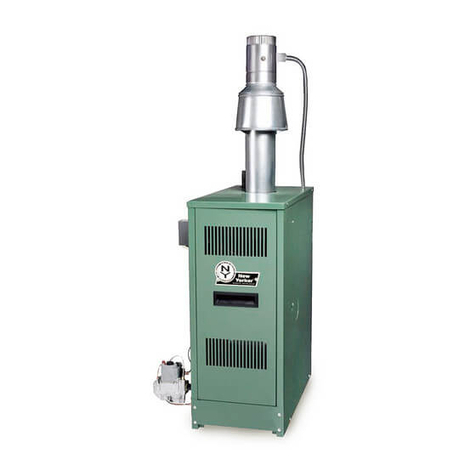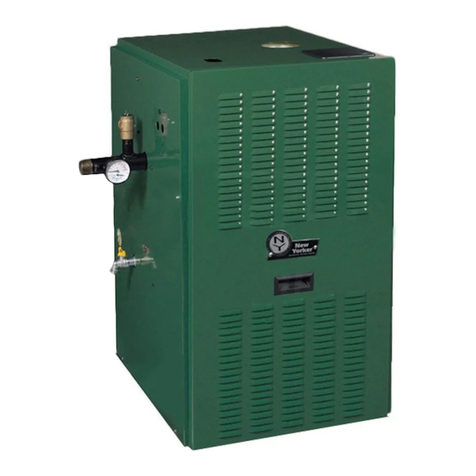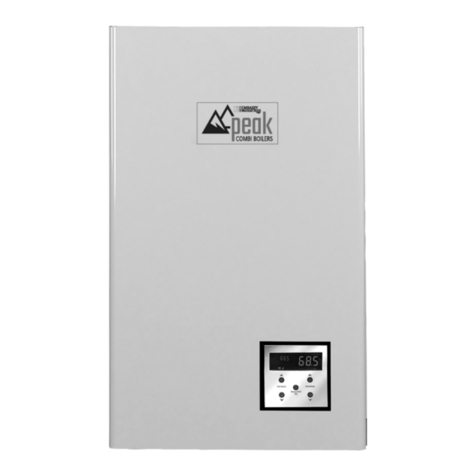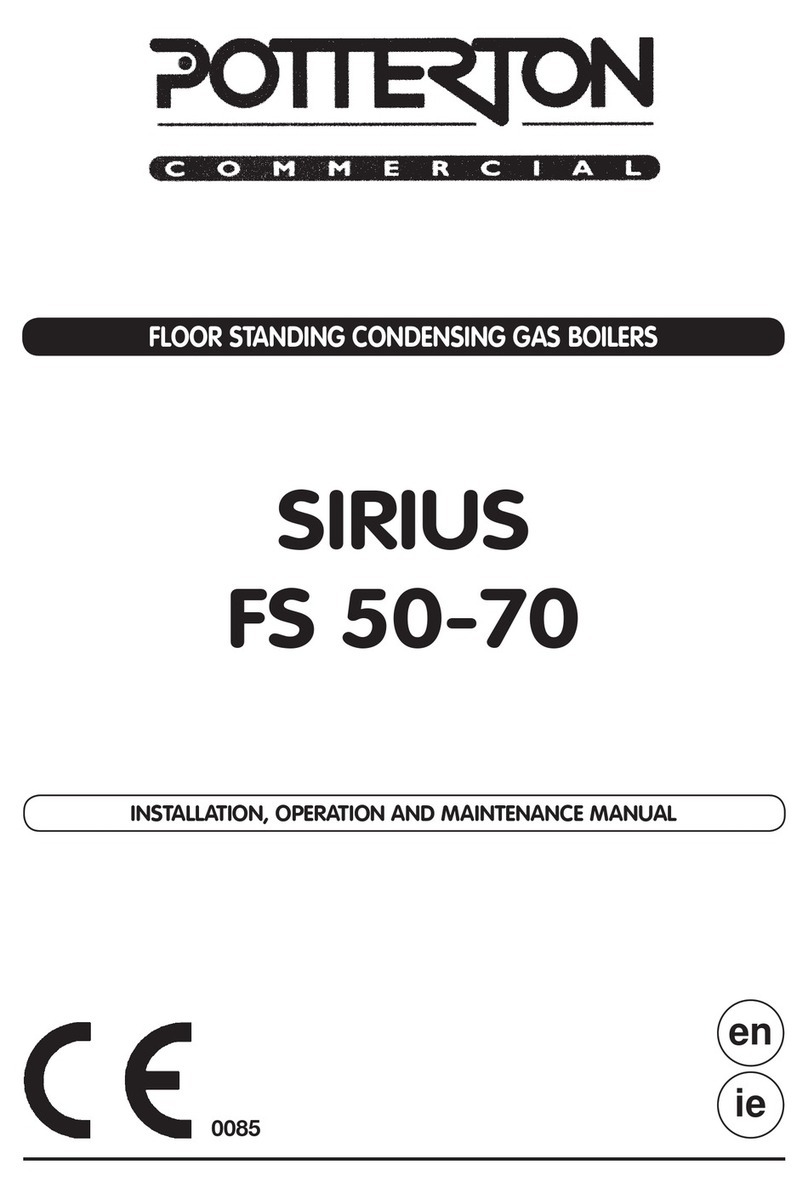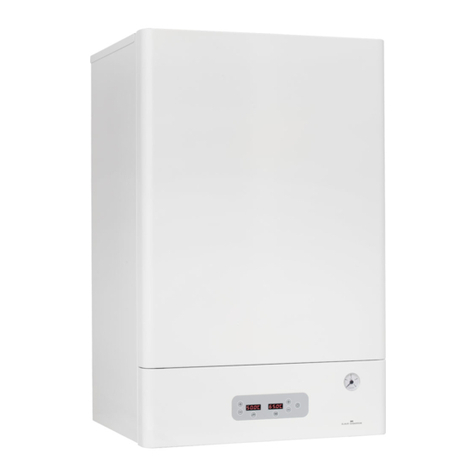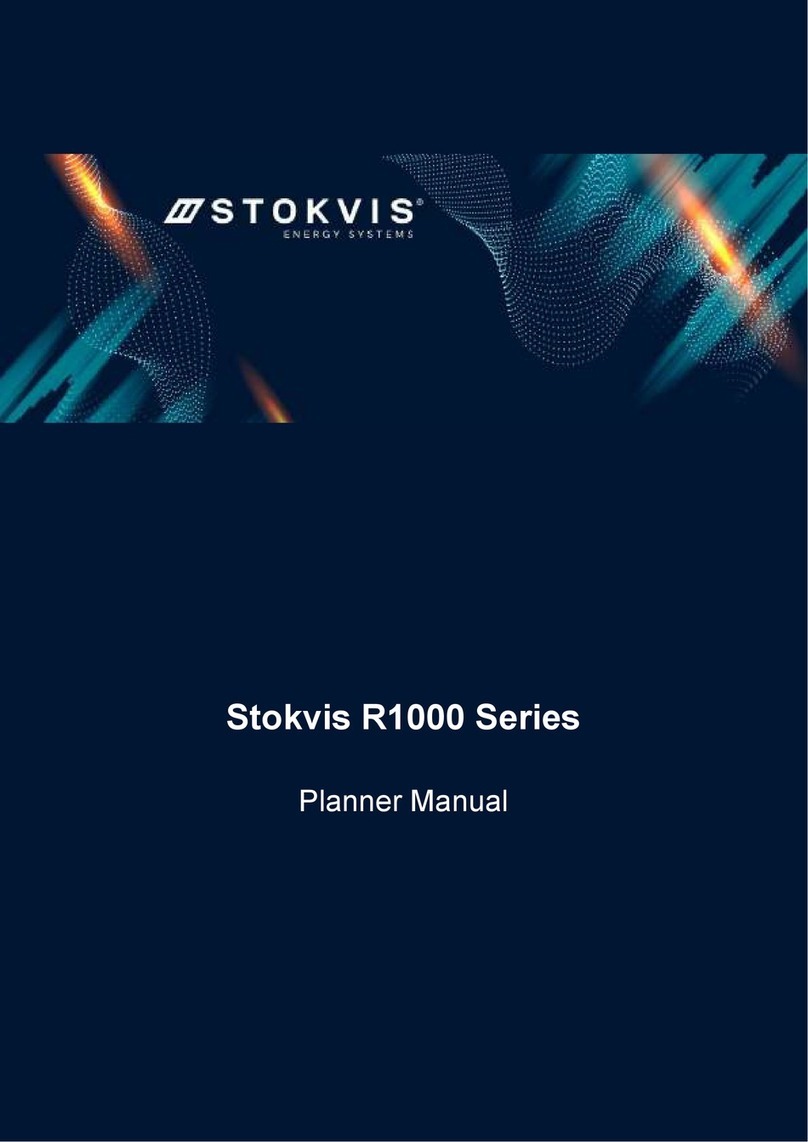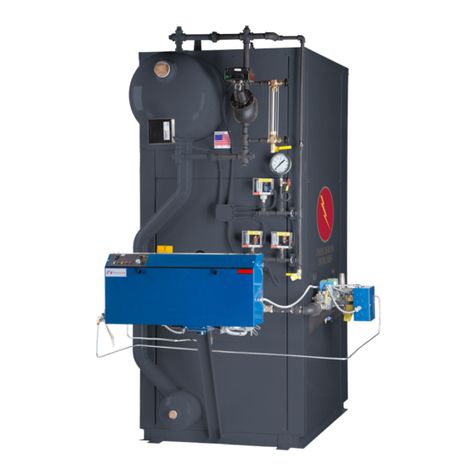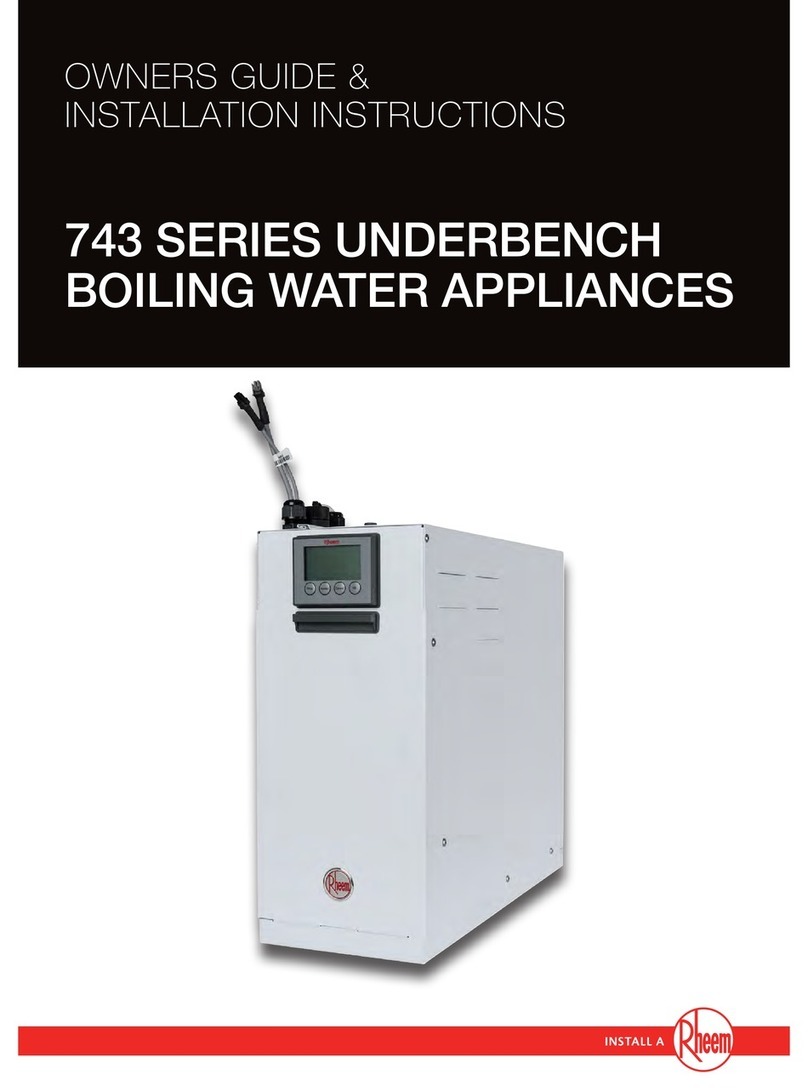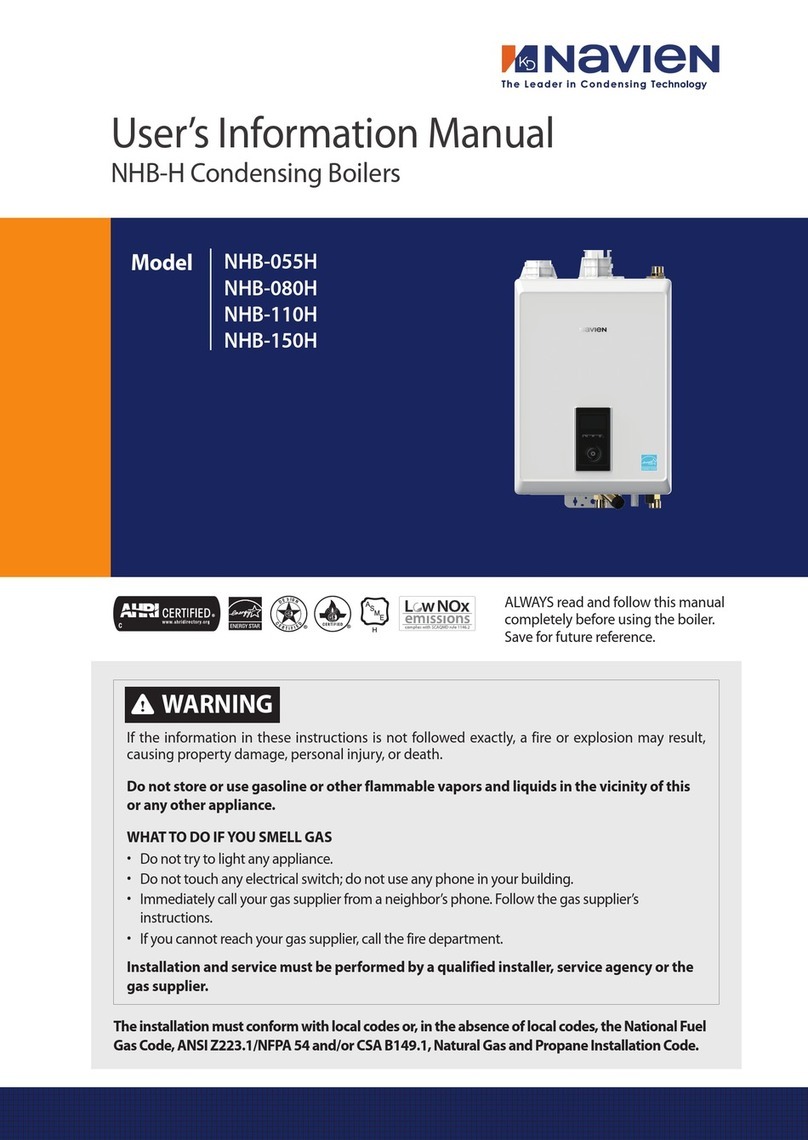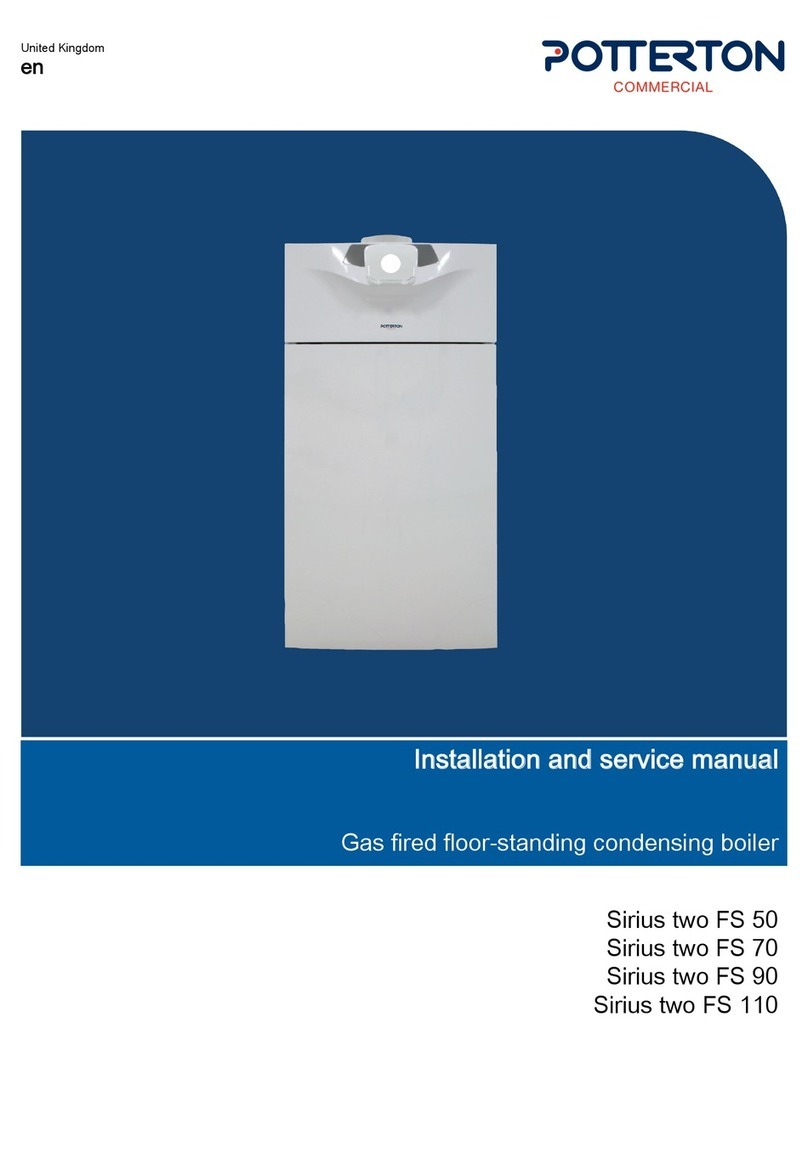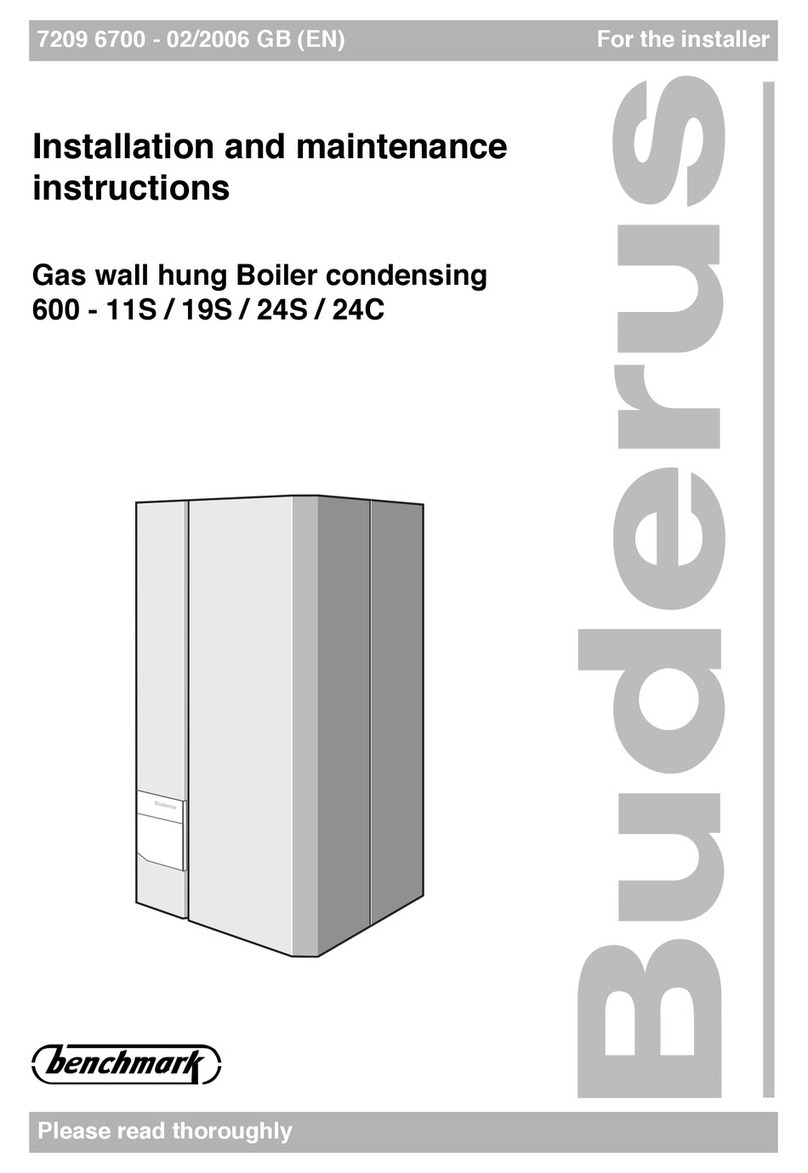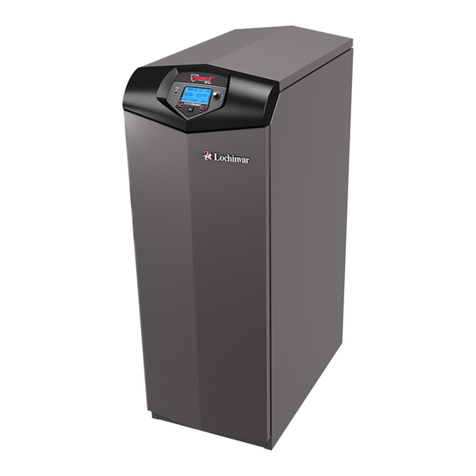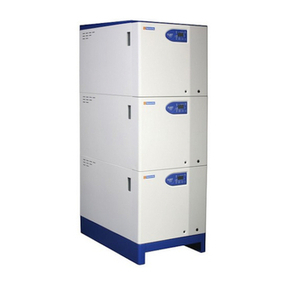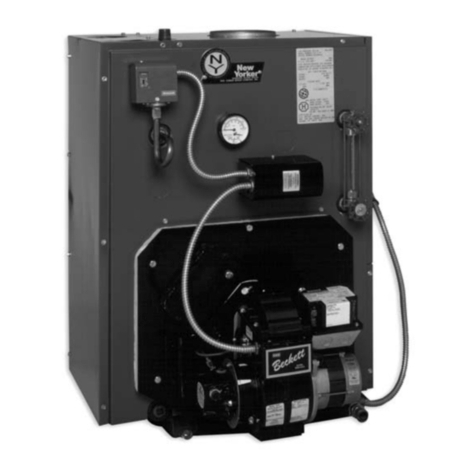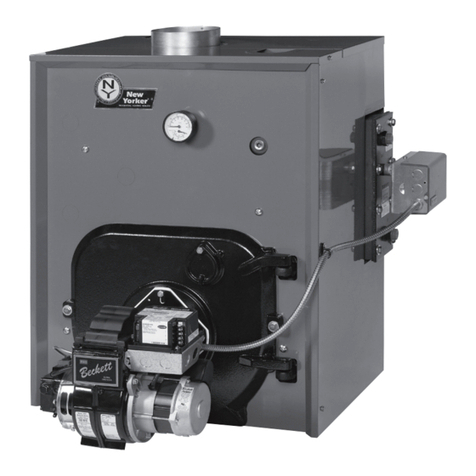
17
1. Remove Safety Relief Valve using extreme care
to avoid damaging it.
2. Partiallyllboilerandaddcausticsodaor
trisodium phosphate. Add an appropriate amount
of recommended boil out compound.
3. Replace Safety Relief Valve.
4. Fill the entire system with water.
5. Startringtheboiler.
6. Circulate the water through the entire system.
7. Vent the system, including the radiation.
8. Allow boiler water to reach operating
temperature, if possible.
9. Continue to Circulate the water for a few hours.
10. Stopringtheboiler.
11. Drain the system in a manner and to a location
that hot water can be discharged with safety.
12. Remove plugs from all available returns and
wash the water side of the boiler as thoroughly
as possible, using a high-pressure water stream.
13. Rellthesystemwithfreshwater.
C. Add appropriate boiler water treatment compounds
asrecommendedbyyourqualiedwatertreatment
company.
D. Make pH or Alkalinity Test.
After boiler and system have been cleaned and
relledaspreviouslydescribed,testthepHofthe
water in the system. This can easily be done by
drawing a small sample of boiler water and testing
with hydrion paper which is used in the same
manneraslitmuspaper,exceptitgivesspecic
readings. A color chart on the side of the small
hydrion dispenser gives the reading pH. Hydrion
paper is inexpensive and obtainable from any
chemical supply house or thru your local druggist.
The pH should be higher than 7 but lower than
11. Add appropriate water treatment chemicals,
ifnecessary,tobringthepHwithinthespecied
range. With this lower level of protection, care must
be exercised to eliminate all of the free oxygen in
the system.
E. Boiler is now ready to be put into service.
TNATROPMI
SITI,NOITAREPOLAMRONGNIRUD,FI
EROMRETAWDDAOTYRASSECEN
,HTNOMAECNONAHTYLTNEUQERF
ECIVRESDEIFILAUQATLUSNOC
METSYSRUOYKCEHCOTNAICINHCET
.SKAELROF
A leaky system will increase the volume of make-up
watersuppliedtotheboilerwhichcansignicantly
shorten the life of the boiler. Entrained in make-up
water are dissolved minerals and oxygen. When the
fresh, cool make-up water is heated in the boiler the
minerals fall out as sediment and the oxygen escapes
as a gas. Both can result in reduced boiler life. The
accumulation of sediment can eventually isolate
the water from contacting the steel. When this
happens the steel in that area gets extremely hot and
eventually cracks. The presence of free oxygen in
the boiler creates a corrosive atmosphere which, if
the concentration becomes high enough, can corrode
the steel through from the inside. Since neither of
these failure types are the result of a manufacturing
defect the warranty does not apply. Clearly it is
in everyone’s best interest to prevent this type of
failure. The maintenance of system integrity is the
best method to achieve this.
14. HINTS ON COMBUSTION
A. NOZZLES — Although the nozzle is a relatively
inexpensive device, its function is critical to the
successful operation of the oil burner. The selection
of the nozzle supplied with the microTEK3 boiler
is the result of extensive testing to obtain the best
ameshapeandefcientcombustion.Otherbrands
of the same spray angle and spray pattern may be
used but may not perform at the expected level of
CO2and smoke. Nozzles are delicate and should be
protected from dirt and abuse. Nozzles are mass-
produced and can vary from sample to sample. For
all of those reasons a spare nozzle is a desirable item
for a serviceman to have.
B. FLAME SHAPE — Looking into the combustion
chamberthroughtheameplughole,theame
should appear straight with no sparklers rolling up
towardthetopofthechamber.Iftheamedragsto
the right or left, sends sparklers upward or makes
wet spots on the rear door insulation piece, the
nozzle should be replaced. If the condition persists
look for fuel leaks, air leaks, water or dirt in the fuel
as described below.
C. FUEL LEAKS — Any fuel leak between the
pump and the nozzle will be detrimental to good
combustion results. Look for wet surfaces in the
air tube, under the transformer, and around the air
inlet. Any such leaks should be repaired as they may
cause erratic burning of the fuel and in the extreme
casemaybecomearehazard.
D. AIR LEAKS — Any such leaks should be repaired,
as they may cause erratic burning of the fuel and in
extremecasesmaybecomearehazard.
There are many possible causes of air leaks in oil
lines such as:
1. Fittingleaksduetomis-aredtubingor
damagedtting.
2. Fuel line leak due to crushed or bent
tubing.





















